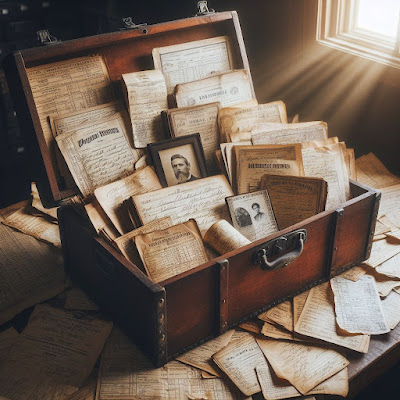How Big is Your Puzzle?

Your Research Question Equals the Size of the Puzzle As usual, when trying to think of what to write about, something prompts the writer; and for me that is often what I've been recently working on. These days, I'm puzzling over my DNA matches tracing back to my third-great-grandparents, George Henry and Martha Willis McBee. Thrulines ® at Ancestry.com has been a useful map from my ancestors to the matches. The Map Is Not The Territory But ThruLines® are not "True" lines. They are created by algorithms from Ancestry user trees including our own; all trees are imperfect, including ours. The same process creates The Theory of Family Relativity™ at MyHeritage. Neither tool reveals all the details we might wish about living people, so they leave us with work to do. Fortunately, I began my research to understand my family and find living cousins, so I've been "building down" for many years. When DNA became a useful new record source, I was already pa...





